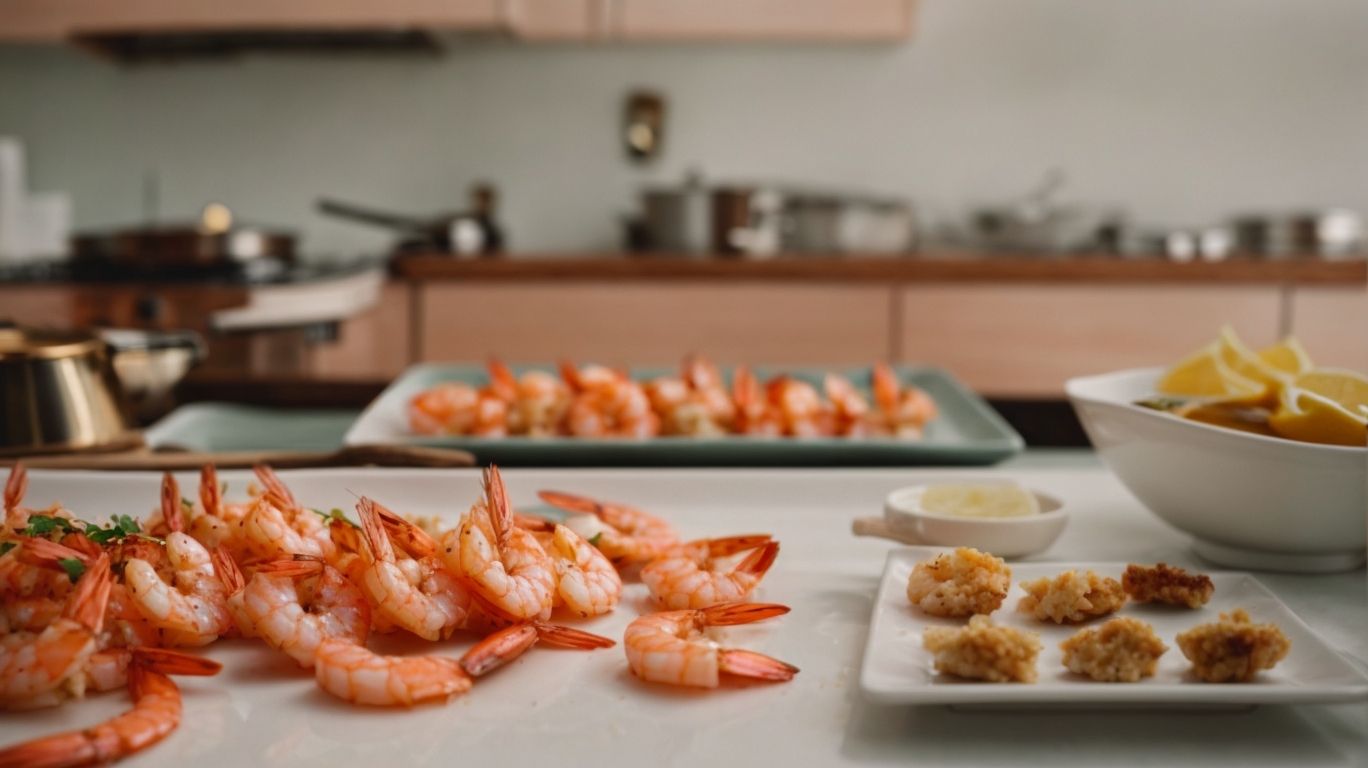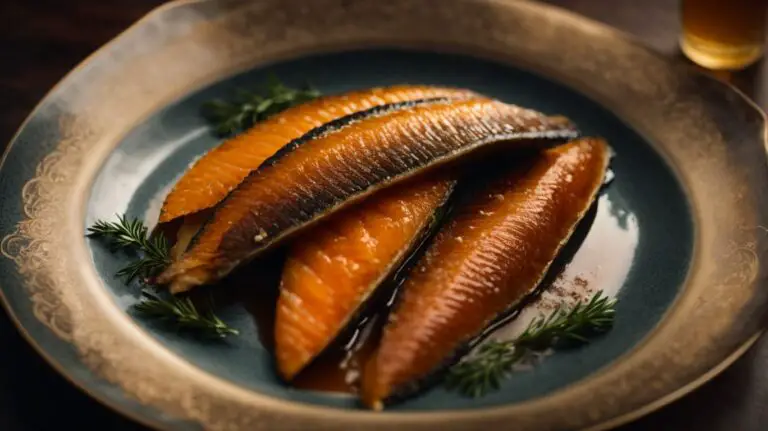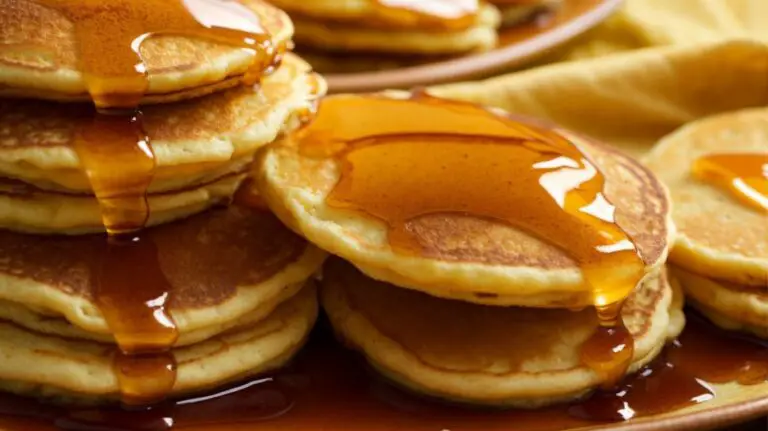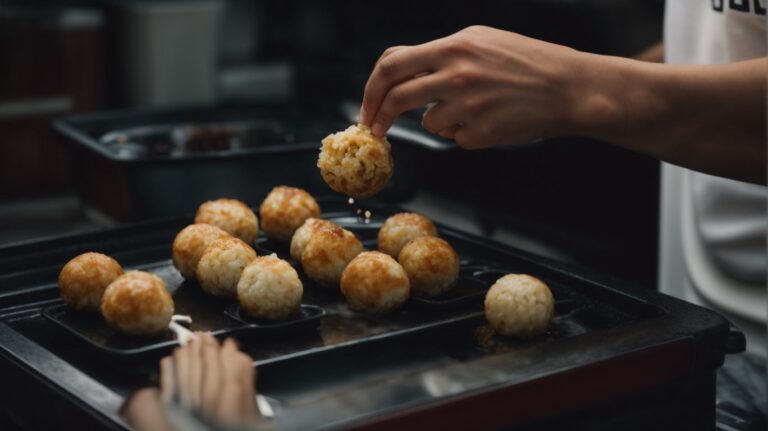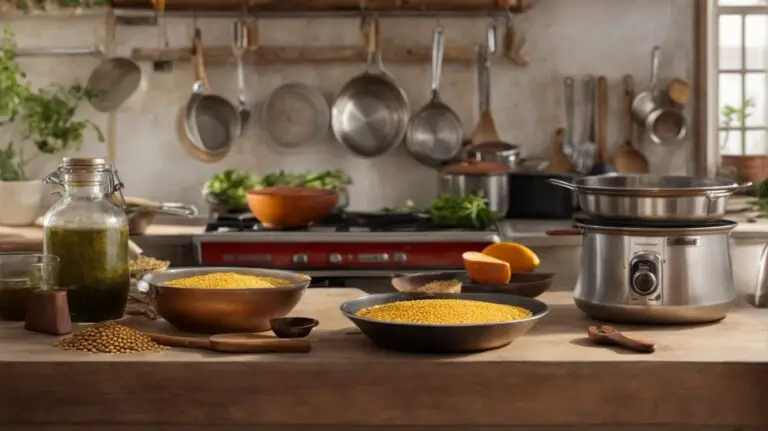How to Cook Shrimp for Shrimp Cocktail?
Are you a shrimp lover looking to elevate your appetizer game? Look no further!
In this article, we will explore everything you need to know about making the perfect shrimp cocktail. From choosing the best type of shrimp to preparing and cooking them just right, we’ve got you covered.
Get ready to impress your guests with delicious shrimp cocktail that will have them coming back for more. Let’s get started!
Key Takeaways:
What Is Shrimp Cocktail?
Shrimp cocktail is a classic appetizer featuring plump shrimp served with a zesty cocktail sauce, creating a flavorful and refreshing starter.
This iconic dish has a rich history dating back to the early 20th century when it gained popularity for its elegant presentation and delicious simplicity. The traditional cocktail sauce, a key element in this appetizer, is a blend of ketchup, horseradish, Worcestershire sauce, and lemon juice, offering a perfect balance of tangy and sweet flavors.
One of the reasons behind its enduring appeal lies in the simplicity of the recipe. By boiling or steaming the shrimp until they turn pink and flavorful, then chilling and serving them with the cocktail sauce, anyone can effortlessly create this crowd-pleasing dish at home.
What Type of Shrimp Is Best for Shrimp Cocktail?
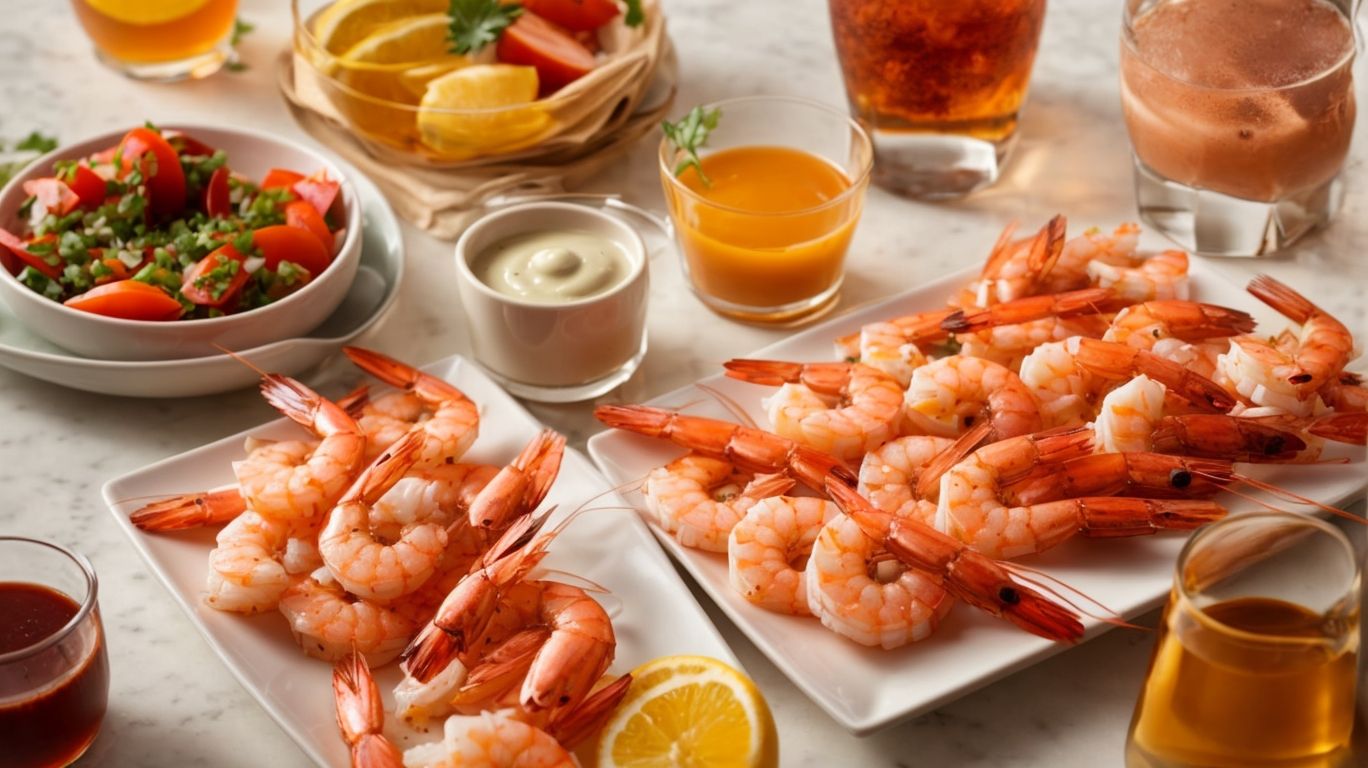
Credits: Poormet.Com – Alan Garcia
Selecting the right shrimp for your shrimp cocktail is crucial, whether opting for specific sizes like jumbo 16-20 shrimp or considering the cooking method to achieve the perfect texture and flavor.
In terms of types of shrimp, the jumbo 16-20 shrimp stand out for their impressive size and succulent meat. These large shrimp are ideal for shrimp cocktail due to their firm texture and sweet taste, making them a favorite among seafood enthusiasts.
Depending on the shrimp size chosen, cooking methods vary to ensure the best results. For smaller shrimp, quick boiling or sautéing works well to preserve their tenderness, while larger shrimp like the jumbo 16-20 benefit from grilling or broiling to enhance their natural flavors.
The jumbo 16-20 shrimp’s specific qualities, such as their size and robust taste, make them particularly suitable for showcasing in a shrimp cocktail. Their impressive appearance adds an elegant touch to any dish, elevating both the visual appeal and taste experience for diners.
Fresh or Frozen Shrimp?
When preparing shrimp cocktail, the choice between fresh and frozen shrimp can impact the dish’s overall quality and taste, with considerations for shell-on shrimp to retain flavor and texture, or opting for frozen varieties that provide convenience while ensuring tender shrimp.
Shell-on shrimp, with their protective covering, lock in the juices and flavors during cooking, resulting in a more succulent and flavorful bite. On the other hand, frozen shrimp, being quickly frozen right after harvest, preserve their natural tenderness and can be easily accessible for impromptu dinner parties or quick meals.
Wild-Caught or Farm-Raised Shrimp?
The choice between wild-caught and farm-raised shrimp for shrimp cocktail can influence sustainability and flavor profiles, with wild-caught options offering a natural taste and farm-raised varieties typically being deveined for convenience and presentation.
In terms of wild-caught shrimp, these are harvested from their natural habitats in oceans or rivers, ensuring a distinct flavor that captures the essence of their environment. On the other hand, farm-raised shrimp are bred in controlled environments where they are carefully monitored and fed, often resulting in a milder taste. The sustainability aspect of wild-caught shrimp is significant as it promotes a balanced ecosystem, whereas the farming of shrimp can sometimes lead to environmental concerns due to the high demand.
How to Prepare Shrimp for Shrimp Cocktail?
Properly preparing shrimp for shrimp cocktail involves essential steps such as thawing frozen shrimp, removing shells, and deveining to ensure the shrimp are ready for cooking and serving in the dish.
In terms of thawing frozen shrimp, it’s vital to do it properly. The best method is to place the frozen shrimp in a colander under cold running water. This helps to thaw them evenly and ensures they maintain their texture.
Once the shrimp are thawed, the next step is to carefully remove the shells. Start by gently peeling back the shell, beginning from the underside of the shrimp. After removing the shells, deveining is crucial. This involves making a shallow slit along the back of the shrimp to reveal and remove the vein, ensuring your shrimp cocktail looks and tastes perfect.
Thawing Frozen Shrimp
Thawing frozen shrimp properly is essential to maintain their texture and flavor, with methods like using cold water or an ice bath ensuring gradual thawing without compromising the shrimp’s quality.
When shrimp are thawed too quickly, the texture can become mushy, and the flavor might be affected. To avoid this, gently place the frozen shrimp in a bowl of cold water, ensuring it is fully submerged. Cold water helps thaw the shrimp evenly and gradually.
Another effective method is the ice bath technique, where you seal the shrimp in a zipper-lock bag and place it in a bowl filled with cold water and ice cubes. This method provides excellent temperature control, preventing any partial cooking during the thawing process.
Removing Shrimp Shells and Veins
Before cooking shrimp for shrimp cocktail, meticulous attention to detail is required in removing the shells and veins, ensuring that the shrimp are impeccably peeled and deveined, with the tail left intact for presentation.
Start by holding the shrimp firmly in one hand and using the other hand to carefully remove the outer shell. Make a shallow incision down the back of the shrimp with a paring knife to expose the dark vein – this is the digestive tract and must be removed.
Once the vein is exposed, gently lift it out using the tip of the knife or your fingers. Rinse the shrimp under cold water to wash away any remaining shell or vein fragments, and pat them dry with paper towels before cooking to ensure they’re ready for your delicious shrimp cocktail.
How to Cook Shrimp for Shrimp Cocktail?
Cooking shrimp for shrimp cocktail involves various methods such as boiling, steaming, grilling, or poaching, each offering unique textures and flavors based on the cooking time and technique employed.
Boiling shrimp is a quick and simple method that retains the natural sweetness of the shrimp. Typically, shrimp are boiled for 2-3 minutes until they turn pink and opaque.
Steaming shrimp is a gentle technique that helps maintain their delicate texture; usually, it takes about 3-4 minutes.
Grilling shrimp imparts a smoky flavor and caramelizes the exterior, usually cooked for 1-2 minutes on each side.
Poaching shrimp involves simmering in flavorful liquid for about 2-3 minutes, infusing the shrimp with additional taste.
Boiling Shrimp
Boiling shrimp for shrimp cocktail requires a delicate balance of salt, sugar, and water in the cooking process to ensure the shrimp are tender and flavorful, creating a perfect base for the dish.
When boiling shrimp, it is crucial to consider the size of the shrimp as it affects the cooking time and texture. Larger shrimp may require a few extra minutes in the boiling water, while smaller ones cook faster. Adding a touch of sugar to the boiling water helps enhance the natural sweetness of the shrimp, balancing out the savory flavors. The salt not only seasons the shrimp but also helps them retain moisture, preventing them from becoming tough.
Using cold water when boiling shrimp helps maintain their tenderness. It’s important to bring the water to a gentle simmer before adding the shrimp to avoid overcooking them. The ideal balance of salt, sugar, and water in the boiling process ensures that the shrimp cocktail turns out exquisite and flavorful, delighting your taste buds with every bite.
Steaming Shrimp
Steaming shrimp, especially jumbo shell-on varieties, is a preferred cooking method for shrimp cocktail, as it retains moisture and delicate flavor profiles while ensuring the shrimp remain plump and tender.
When steaming shrimp, the gentle heat envelops the shell, creating a seal that locks in natural juices and sweetness, resulting in succulent and juicy shrimp with a hint of brininess. This method is a game-changer for shrimp cocktail enthusiasts who seek that perfect texture and taste balance. By cooking the jumbo shell-on shrimp through steaming, it also prevents the flesh from becoming rubbery or tough, showcasing the true essence of the ocean’s bounty on every bite.
Grilling Shrimp
Grilling shrimp with specific seasonings like horseradish can impart a smoky flavor and unique charred notes to the shrimp, adding depth and complexity to the overall taste profile of the shrimp cocktail.
When grilling shrimp for a shrimp cocktail, the process infuses the seafood with a delightful smokiness that complements the natural sweetness of the shrimp. The addition of horseradish enhances the overall taste by providing a zesty kick, balancing out the richness of the dish.
This cooking method allows for the shrimp to develop a caramelized exterior, which adds a satisfying crunch and texture to each bite. The contrast between the tender interior and the charred, slightly crispy exterior elevates the sensory experience of enjoying a shrimp cocktail. To achieve the perfect balance of flavors and textures, carefully monitor the grilling process to ensure the shrimp are cooked just right.
Poaching Shrimp
Poaching shrimp in a roasting dish can result in tender and succulent shrimp for the cocktail, as this gentle cooking method allows the shrimp to absorb flavorful liquids and maintain their delicate texture.
When poaching shrimp, the roasting dish acts as an ideal vessel, ensuring even heat distribution and maximizing the infusion of flavors.
The shrimp gradually cook in a tantalizing broth of herbs, spices, and aromatics, enhancing their natural taste without overpowering it.
By poaching, the shrimp’s tenderness is preserved, making each bite a delectable experience that complements the cocktail sauce harmoniously.
How to Chill Shrimp for Shrimp Cocktail?
Chilling shrimp after cooking in an ice bath is essential to stop the cooking process and ensure the shrimp remain cool and plump, ready to be served as a refreshing component of the shrimp cocktail.
When shrimp are cooked, they continue to retain residual heat which can overcook the delicate meat if not promptly cooled. Placing the cooked shrimp in an ice bath halts the cooking immediately, preventing them from turning rubbery and maintaining their tender texture. The rapid chill helps the shrimp to lock in moisture, ensuring they stay succulent and juicy, enhancing their natural sweetness. This crucial step not only preserves the quality of the shrimp but also enhances their visual appeal, making them firm and plump, ideal for presentation in a luscious cocktail.
How to Make Cocktail Sauce for Shrimp Cocktail?
Creating the perfect cocktail sauce for shrimp cocktail involves combining ingredients like horseradish, Worcestershire sauce, and lemon juice to achieve a harmonious blend of tangy and savory flavors that complement the shrimp beautifully.
When making this flavorful sauce, ensuring the right balance of ingredients is crucial. The heat from the horseradish adds a zesty kick, while the Worcestershire sauce contributes depth and umami richness. Cocktail sauce acts as a perfect companion to the succulent shrimp, enhancing their natural sweetness with its tanginess.
One can also customize the recipe by adding a dash of hot sauce for extra spice or a pinch of sugar to mellow out the flavors. The versatility of this classic cocktail sauce allows for personalization to suit individual preferences, making it a staple condiment for seafood lovers.
Classic Cocktail Sauce Recipe
The classic cocktail sauce recipe for shrimp cocktail includes a blend of ketchup, horseradish, lemon juice, and a dash of Tabasco sauce, resulting in a zesty and traditional sauce that complements the shrimp perfectly.
One of the key factors in creating this classic cocktail sauce is the balance between the sweetness of the ketchup and the heat from the Tabasco sauce. The tangy undertones from the lemon juice add a refreshing kick to the overall flavor profile. When mixed together, these ingredients create a harmonious blend that has remained a favorite for generations.
The popularity of this timeless sauce lies in its versatility; it not only pairs impeccably with shrimp cocktails but also serves as a delicious accompaniment to other seafood dishes. Its simple yet flavorful nature makes it a staple on many dining tables, providing a burst of flavor to every bite.
Spicy Cocktail Sauce Recipe
For those who enjoy a kick of heat, the spicy cocktail sauce recipe for shrimp cocktail incorporates hot sauce, lemon zest, and additional spices to create a fiery and flavorful alternative that elevates the dish with a bold twist.
If you’re looking to add a zesty and fiery twist to your seafood indulgence, this spicy cocktail sauce is just the ticket. The combination of tangy hot sauce and the fresh citrusy punch of lemon zest infuses the sauce with a vibrant flavor profile that complements the succulent taste of shrimp perfectly. The intensity of the spices used in this recipe brings a depth of flavor that will tantalize your taste buds.
The spicy cocktail sauce not only enhances the overall taste of the shrimp cocktail but also adds a layer of excitement and heat that is sure to leave a lasting impression. The tanginess of the sauce, combined with the fiery kick from the hot sauce, creates a harmonious balance that will make this dish a standout favorite at any gathering.
How to Assemble and Serve Shrimp Cocktail?
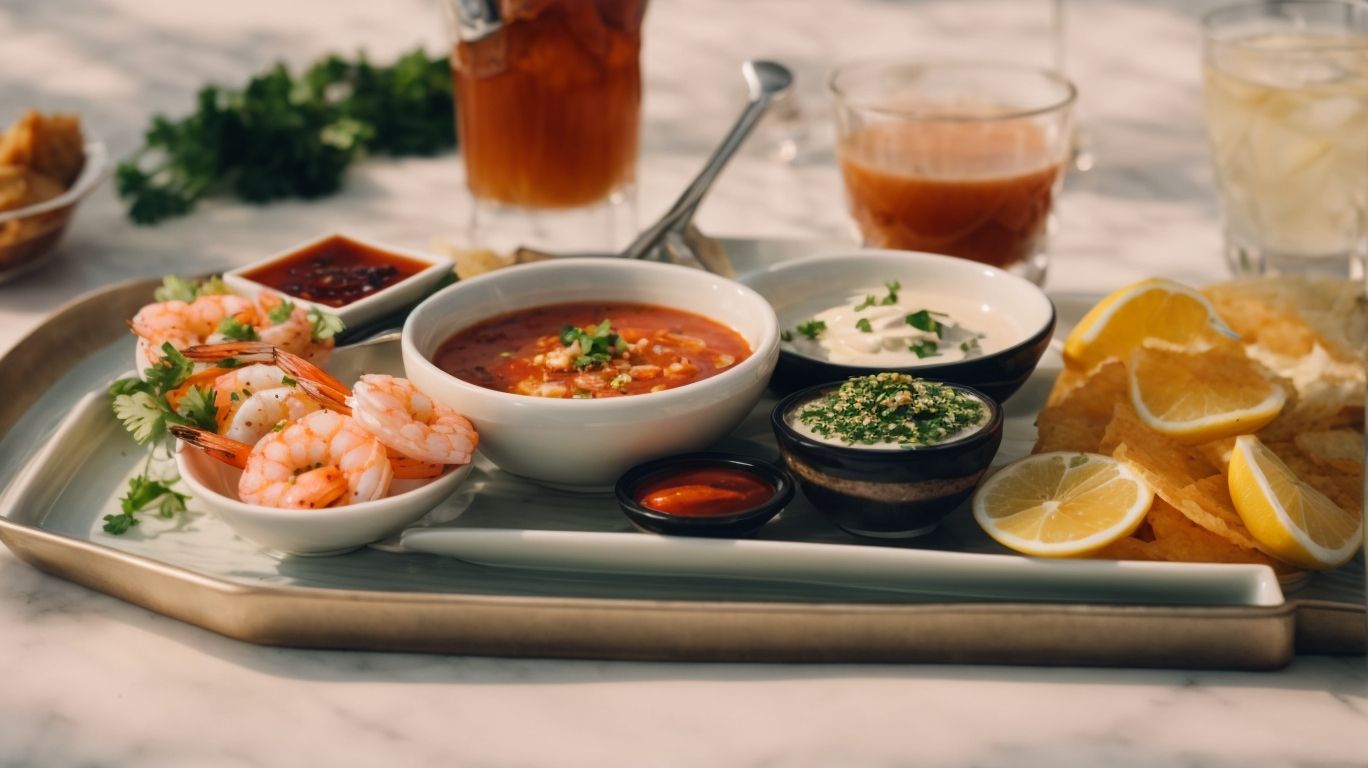
Credits: Poormet.Com – Eric Scott
Assembling and serving shrimp cocktail involves arranging the chilled shrimp on a bed of ice, garnishing with lemon wedges, and elegantly drizzling the cocktail sauce over the plump shrimp tails for a visually appealing and delectable presentation.
To maintain the overall aesthetic and taste experience, plating plays a crucial role in creating a memorable dish. The careful arrangement of the seafood delicacy on the ice bed not only ensures that the shrimp stay chilled but also adds a touch of elegance to the presentation. The shrimp tails, with their graceful curve and vibrant color, serve as a natural decorative element, enhancing the visual appeal of the dish. When served in a cocktail glass or on a platter, the shrimp cocktail becomes a centerpiece of any gathering or meal.
Tips for Perfect Shrimp Cocktail
Enhance your shrimp cocktail experience with expert culinary tips, select the freshest produce for the best flavor, and ensure you provide accurate nutritional information for a well-rounded dining experience.
When preparing your shrimp cocktail, always opt for high-quality, fresh ingredients to elevate its taste profile. Choose plump, firm shrimp, ideally sourced from trusted suppliers, and pair them with crisp, vibrant vegetables for a delightful contrast of textures. To further enhance the flavor, consider marinating the shrimp in a zesty citrus blend or a tangy cocktail sauce before serving.
- For the ultimate freshness, scout local markets or fishmongers for seafood that has been recently caught.
- Embrace unique garnishes like avocado slices, microgreens, or a sprinkle of smoked paprika to add visual appeal and additional layers of flavor to your dish.
Frequently Asked Questions
How to Cook Shrimp for Shrimp Cocktail?
Question: What is the best method for cooking shrimp for a shrimp cocktail?
The best method for cooking shrimp for a shrimp cocktail is to poach them in a flavorful liquid, such as a mixture of water, lemon, and herbs. This method ensures that the shrimp stay tender and juicy.
How to Cook Shrimp for Shrimp Cocktail?
Question: Can I use frozen shrimp for a shrimp cocktail?
Yes, you can use frozen shrimp for a shrimp cocktail. Simply thaw them before cooking and follow the same cooking method as fresh shrimp.
How to Cook Shrimp for Shrimp Cocktail?
Question: What seasoning should I use when cooking shrimp for a shrimp cocktail?
The best seasoning for shrimp cocktail is a combination of lemon, garlic, and Old Bay seasoning. This adds a delicious flavor to the shrimp without overpowering the dish.
How to Cook Shrimp for Shrimp Cocktail?
Question: How long does it take to cook shrimp for a shrimp cocktail?
Shrimp cook very quickly, so it only takes about 2-3 minutes to cook them in a poaching liquid. You will know they are done when they turn pink and curl into a “C” shape.
How to Cook Shrimp for Shrimp Cocktail?
Question: Can I use any type of shrimp for a shrimp cocktail?
While you can use any type of shrimp for a shrimp cocktail, large, tail-on shrimp are best for presentation and ease of eating. Look for shrimp labeled as “jumbo” or “extra-large” for the best results.
How to Cook Shrimp for Shrimp Cocktail?
Question: How can I ensure that my shrimp cocktail is safe to eat?
To ensure that your shrimp cocktail is safe to eat, make sure to cook the shrimp to an internal temperature of 145°F (63°C). You can also check for doneness by cutting into the thickest part of a shrimp and making sure it is opaque all the way through.

